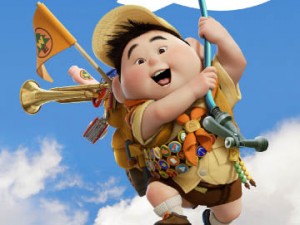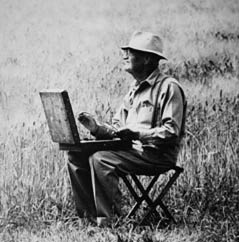
We affectionately referred to Skyline as “a football dynasty with a high school attached.” Rowdy hallways filled with chest pounding giant meat heads Coach DuPaix recruited promising college football scholarships and a “continuation of the dynasty of state championships.” I wasn’t on the football team, but like the players I sailed through my classes and graduated with a 3.3 GPA. Then a big shock came when I took the ACT test: an 18 in math a 17 in science, despite receiving Bs in these classes!
It was clear from ACT that I wasn’t prepared for a university education. Now in hindsight, the first big achievement in my education wasn’t my diploma, but this bitter humility.
Realizing my own ignorance was the beginning of my quest for real knowledge and a true understanding of the subjects I mostly slept through in high school (literally).
I was lucky to find a great job and I enrolled at the Salt Lake Community College, which I found a perfect fit. It was common in high school to feign understanding to avoid looking dumb, but at the community college I found nobody was afraid to ask stupid questions because everyone was there to learn and student’s images weren’t at risk for participating
In my first Algebra class I had the great opportunity to learn under a true mathematics teaching master Chuck Cummings. Chuck clearly loved his job and loved to see students get it. When I didn’t understand how to solve a problem I visited the Learning Center and received one-on-one tutoring from people who loved math.
I had an amazing life drawing class under George Alan, who was an adjunct professor making a nice living as an artist and teaching for the pure love of his craft. He mentioned his former Professor at the University of Utah, Alvin Gittins who he said he had to thank for his training and ability make a living as an artist.
Unlike high school, where I dreaded long boring days, I looked forward every day to attending SLCC; classrooms were packed full of eager students of all ages and backgrounds.
The community college teachers came prepared with riveting lectures and everyone wanted to learn.
After my extended stay at community college, I was excited to finally transfer to the University of Utah. But in my first group of class in the Fall semester I realized I was again being swept up in another campus where all the talk and news was about football and the success of Coach Urban Meyer and the Utes, strangely their success didn’t make me want to study harder, but instead watch games, drink beer and eat pizza.
I love football, but at the U — like campuses all over the country — football players are the stars and professors have to compete for the attention of students who would rather text their friends about the “next big game” than listen and learn, like nerds.
The Asian students who have immigrated to Utah don’t care about the PAC 12. Instead they are focused on learning and kicking our butts in academics.

In the September 2011 issue of Utah Stories we presented a few of the greatest stars of the academic world the U of U has produced:
“I wanted to be the first person to use computers to make movies,” says Ed Catmull , a student at the University of Utah under Dave Evans and Ivan Sutherland in the early 1970s. He accomplished this goal over twenty years later when his company Pixar introduced Toy Story.
Alvin Gittins brought his incredible talent for painting portraits to the University of Utah in the late 1950s. Gittins spent over 20 years sharing his techniques with students, helping produce many of the most famous Western artists today.
There are some gifted teachers who have the unique ability to share their passion through lectures to students. But this isn’t enough: only students who offer their complete attention can tap an incredible source of power: where ideas, dreams, companies and jobs can form out of thin air. It’s this source of power we try to present in this issue of Utah Stories.



